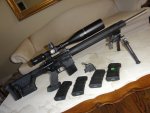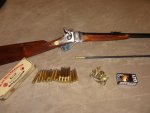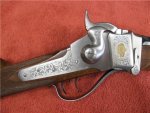Yes it's worth it. I have shot over one of these for years, but there are compromises to be considered. Are you getting one to purely support shooting off a bench for competition or plinking or is this for workup of loads / sight-in for field activities like hunting or PRS? If just bench work or say benchrest comps then any of the usually suspects would work, Bald Eagle (ie Grizzly), Sinclair, Protektor. Caldwell even makes a similar if not same foot print as these and it's likely some if not all are sourced from same producer. I'm guessing a SEB or any of the other high end rests is just overkill for what you're wanting to do..
I personally prefer the heavier rests because they tend to not move once you place them and I slingshot footprint. They are a pain to carry / store, but if weight is a concern, I'd still suggest sticking to a slingshot type base in aluminum instead of cast or at a minimum a pattern like the Sinclair lightweight. The lower weight helps to stabilize them and keep them from being tippy, which is why I don't recommend something like Hoppe's Experts bench rest. The other advantage is they have spiked feet, which depending on your range, can be forced into the bench top with a slight tap of the hammer to ensure your rest stays in same position, at least in theory.
The other thing to consider is your rifle forend shape. You need to get a bag that matches your forend shape as closely as possible. Of course this can be upgraded or you can buy one to adapt to multiple styles later. Just make sure it's small enough to "cradle" the forehand without choking it. The advantage of the above rest is they have pinching ears to adjust for some tightness but it's best to match your top bag to the forend. You're not trying to vice it in, just have a consistent track for the gun to slide or sit in.
The debate / compromise with using these is recoil management. BR guys use " free recoil" typically where the only part of their body contacting the gun is their thumb and index finger, when making a shot. That's fine for benwork only but as soon as you apply a shoulder or arm, now you're inducing a pivot or stress point. The gun will recoil to path of least resistance and if your mechanics are not solid, you will see differing results on shot to shot placement. Maybe not massive, but it's something to consider. This is where bag fit is critical to try and maintain consistency.. You may be thinking, I'll just hold the gun down, that may work, so long as everything stays the same, but again, are you now doing something that isn't consistent, is inducing another stress on the gun or potentially your body. The other problem are you going to replicate this in the field. If not, then you will probably see different results unless your fundamentals are rock solid.
Frank points this out a lot and he's spot on. You have to be consistent. However, there is the fact of what are your expectations, minute of deer or the everyday "1/4 MoA" that everyone says their gun will shoot. You just have to be conscious of the fact you may get different results shooting from the rest than say a bipod, a bulls bag or a fencepost. I say may because in reality if the scope is sighted in properly, the gun is solid, and your fundamentals are rock solid, chances are the gun is going to shoot in the same spot, unless there is an unknown stressor acting on it. An example would be having a non free floated barrel and the rest casting contact, or a wood stock swelling in the field due to humidity after signing in on a dry day.





